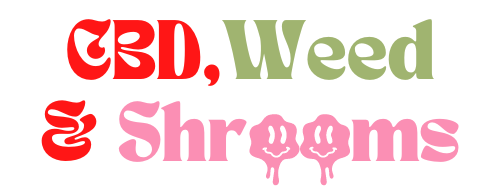How to Differentiate the Effects of Psychedelics from Adverse Effects or Serotonin Toxicity
Many individuals who have had their first psychedelic experience may have encountered unpleasant somatic effects without experiencing the usual spiritual feelings or psychedelic effects. This can lead to confusion and raise concerns about serotonin toxicity or the interaction of medications or substances with psychedelics. To ensure the safety of psychedelic experiences and help individuals understand their own experiences, it is essential to differentiate between the strong somatic effects of psychedelics and toxicity. This skill is crucial for facilitators or providers of psychedelic experiences, as it can make a significant difference in terms of healing and preventing traumatization.
Side Effects or Purging?
In modern-day clinical trials of psychedelic-assisted therapy, researchers are required to report both the beneficial effects and side effects or adverse effects. Unpleasant effects such as nausea, sweating, anxiety, or panic are considered side effects and are different from adverse effects, which are more severe and can include seizures. However, in anthropological literature on shamanic philosophies of psychedelic sacraments, these unpleasant effects are often interpreted as purgative or energetic effects that facilitate the removal of negative energies or blockages. It is essential to consider both perspectives and determine where the line is drawn for each individual. If somatic effects are followed by a sense of openness and positive changes, it may indicate a purging process that is beneficial. On the other hand, if the effects are severe, dangerous, or worsen the individual’s well-being, it may be necessary to reassess the psychedelic use.
What is Serotonin Toxicity or Serotonin Syndrome?
Serotonin Toxicity, also referred to as Serotonin Syndrome, is a severe form of poisoning that occurs when there are increased levels of serotonin at the synapses between neurons. This excessive serotonin then overstimulates post-synaptic serotonin receptors, leading to toxic responses. The serotonin receptor most associated with Serotonin Toxicity is the Serotonin 2A receptor (5HT2AR), which is also the receptor critical to the mechanisms of action of serotonergic psychedelics.
What are the Signs and Symptoms of Serotonin Toxicity?
The classic triad of symptoms indicating Serotonin Toxicity includes myoclonic seizures, severe hyperthermia, and altered mental status. In severe cases, these symptoms can lead to unstable blood pressure and heart rate, respiratory failure, and other life-threatening complications. When examining psychedelic experiences, it is important to look for intense somatic effects that persist beyond the expected psychological trajectory of the experience.
What Types of Substances Can Cause Serotonin Toxicity?
Substances that elevate serotonin levels can cause Serotonin Toxicity when taken in overdose or in combination with each other. The three main types of substances that can raise serotonin levels are Serotonin Reuptake Inhibitors (SRIs), Serotonin Releasing Agents (SRAs), and Monoamine Oxidase-A Inhibitors (MAOIs).
How is Serotonin Toxicity Diagnosed?
The gold standard diagnostic criteria for Serotonin Toxicity are the Hunter’s Decision Rules, which offer high levels of sensitivity and specificity for diagnosis. These criteria help identify cases of Serotonin Toxicity accurately without falsely diagnosing individuals. However, there are other criteria, such as the Sternbach’s Criteria, which are sensitive but less specific. The symptoms included in Sternbach’s Criteria often overlap with the unpleasant somatic effects of serotonergic psychedelics, increasing the risk of false positives. While looser diagnostic criteria like Sternbach’s may be used as a screening tool, it is important to monitor individuals closely and seek medical assistance if severe signs of Serotonin Toxicity develop.
Are Psychedelics High Risk for Serotonin Toxicity?
When used in moderate doses without combining substances that raise serotonin levels, psychedelics pose a low risk of Serotonin Toxicity. The risk of serotonin toxicity varies depending on the specific serotonergic psychedelic and its combination with other substances. Classic tryptamine psychedelics like psilocybin, LSD, and DMT are low risk for Serotonin Toxicity because they partially activate the 5HT2A receptors without trapping serotonin or raising its levels. However, certain combinations, such as using 5-MeO-DMT with MAOIs, can increase the risk of Serotonin Toxicity. Phenethylamine psychedelics like MDMA can release serotonin and raise its levels, making them more susceptible to Serotonin Toxicity, especially in overdose settings. Psychedelics containing MAOIs, such as ayahuasca, may carry the highest risk of Serotonin Toxicity when combined with other substances that raise serotonin levels.
When Should Medical Attention Be Sought?
Knowing when to seek medical attention during a psychedelic experience is crucial. The chart below provides a categorization of symptoms, helping individuals determine whether watchful waiting and close monitoring are sufficient or if immediate medical attention is necessary. Seeking medical attention when needed is essential for safety, although it may disrupt the set and setting. On the other hand, seeking medical attention for mild symptoms that can be managed with basic support may result in unnecessary disruption and potential traumatization.
Conclusion
Understanding the differentiation between the effects of psychedelics and serotonin toxicity is crucial for ensuring safe and beneficial experiences. Facilitators and providers of psychedelic experiences should have clear protocols in place to prevent combinations of drugs that could increase the risk of toxicity. Additionally, they should be prepared to manage toxic responses if they occur, although such occurrences are rare.
References
- Boyer, E.W. and M. Shannon, The Serotonin Syndrome. N Engl J Med, 2005. 352(11): p. 1112-1120.
- Malcolm, B. and K. Thomas, Serotonin toxicity of serotonergic psychedelics. Psychopharmacology (Berl), 2021.
- Boyer, E.W. and M. Shannon, The Serotonin Syndrome. New England Journal of Medicine, 2005. 352(11): p. 1112-1120.
- Gillman, K., Monoamine oxidase inhibitors: A review concerning dietary tyramine and drug interactions. PsychoTropical Commentaries, 2017. 1(1): p. 105.
- Dunkley, E.J.C., et al., The Hunter Serotonin Toxicity Criteria: simple and accurate diagnostic decision rules for serotonin toxicity. QJM: An International Journal of Medicine, 2003. 96(9): p. 635-642.
- Nayak, S.M., et al., Classic Psychedelic Coadministration with Lithium, but Not Lamotrigine, is Associated with Seizures: An Analysis of Online Psychedelic Experience Reports. Pharmacopsychiatry, 2021. 54(5): p. 240-245.
- Vuori, E., et al., Death following ingestion of MDMA (ecstasy) and moclobemide. Addiction, 2003. 98(3): p. 365-8.
- Pilgrim, J.L., et al., Serotonin toxicity involving MDMA (ecstasy) and moclobemide. Forensic Sci Int, 2012. 215(1-3): p. 184-8.
- Sarparast, A., et al., Drug-drug interactions between psychiatric medications and MDMA or psilocybin: a systematic review. Psychopharmacology (Berl), 2022. 239(6): p. 1945-1976.


